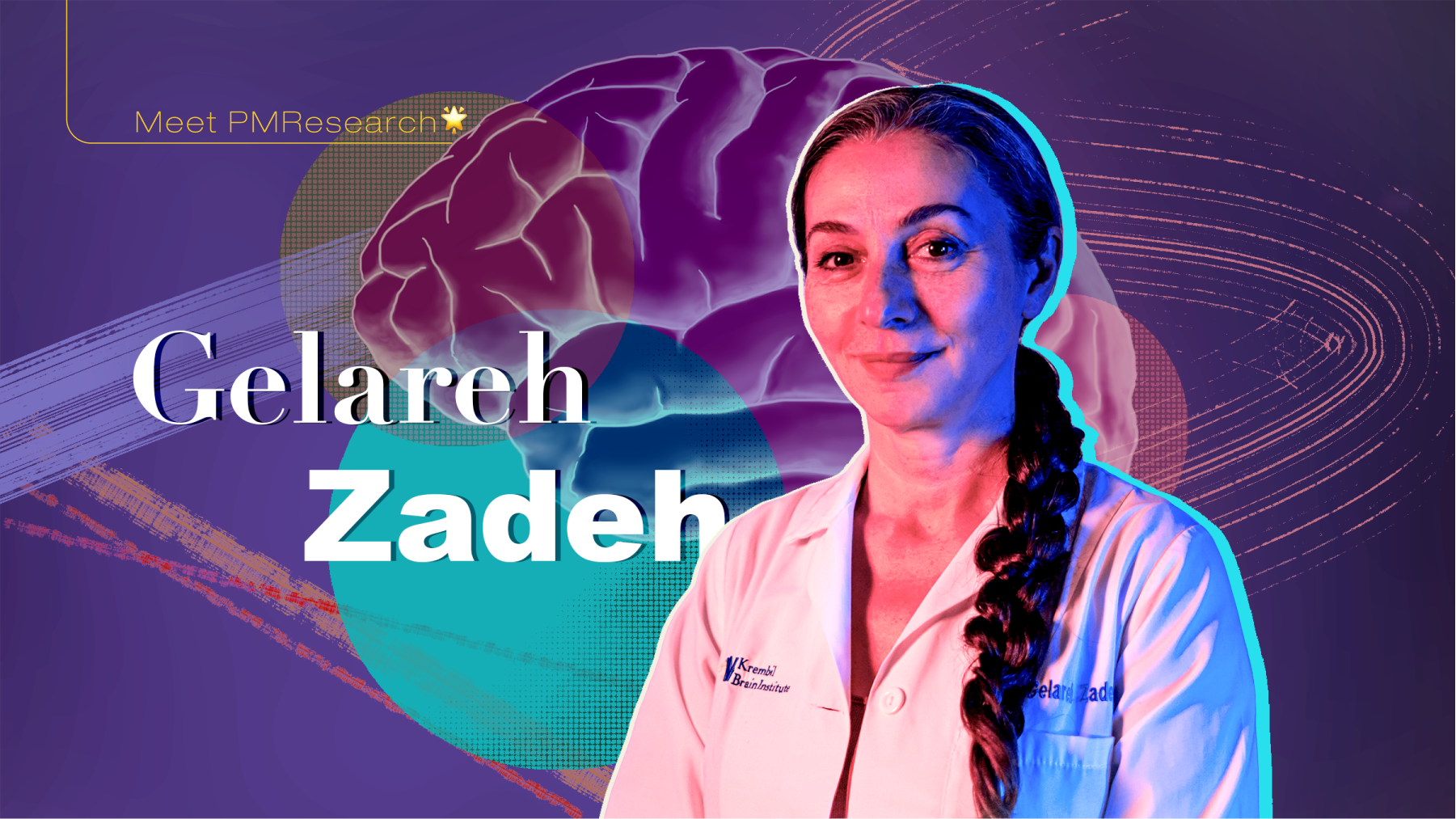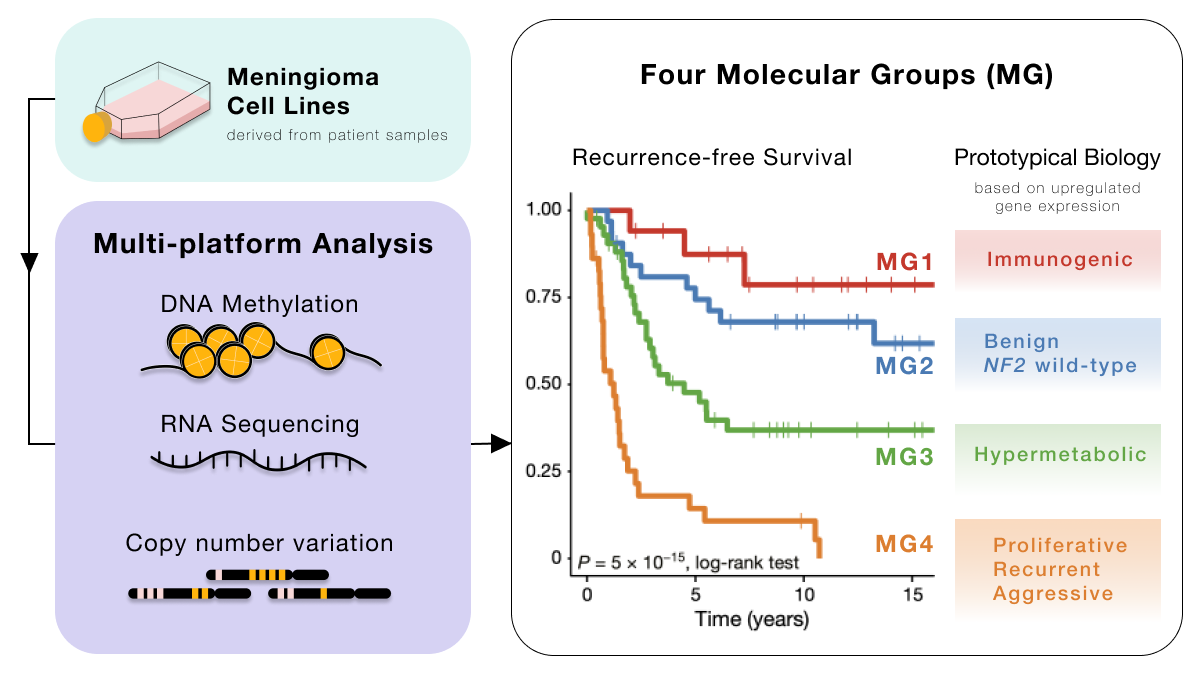
From bedside to bench science
Many of us can recall the moment we knew what we wanted to be when we grew up. For Gelareh, that realization came when she observed brain surgery for the first time.
While exploring her career options in medical school, Gelareh decided to take an elective course in neurosurgery. The surgeons teaching the course invited her to watch them perform an operation.
As Gelareh watched the open brain surgery through an operating microscope, she was captivated by the complexity of the brain, and also by the surgeons’ remarkable attention to detail, focus and dexterity. This experience marked the beginning of Gelareh's lifelong career in neurosurgery.
A short time later, Gelareh went on to complete residency training in neurosurgery. At that time, Gelareh saw the need and opportunities for more research to address the problems faced by neurosurgeons and to improve the outcomes of their patients. This motivated her to pursue a PhD so that she could study clinically relevant questions in the laboratory.
While completing her doctoral research, through influence from her mentors, colleagues, and the literature she read, Gelareh began to focus on brain tumour biology. Since then, she has dedicated her career to identifying cancer-driving pathways, as well as therapeutics that can block and slow down the growth of brain tumours.
“I'm quite proud of my title as Senior Scientist at Princess Margaret, which is a rare position for a surgeon to hold,” says Gelareh. “I really value the opportunity to make contributions to investigative and translational brain tumour research. And I find it very rewarding to work alongside the community of cancer researchers and scientists at UHN.”
Closing the translational loop
From over 150 types of brain tumours that she could have studied, Gelareh chose to focus on meningiomas and neurofibromatosis.
Meningioma is the most common form of brain tumour. When the disease progresses it has the potential to become very aggressive and, because of the aging population, its incidence has risen over the past 20 years. Despite this, meningiomas remain an understudied type of brain tumour.
In clinical practice, meningiomas are diagnosed using histopathological methods, namely by examining tumour tissue specimens under a microscope. Using classifications outlined by the World Health Organization (WHO), the tumours can be categorized into WHO grade I (benign), grade II (intermediate) and grade III (malignant) meningiomas.
Although the grading system can be used to indicate the aggressiveness of meningiomas, Gelareh noticed that it is not a good predictor of tumour behaviour—a key factor to consider when providing treatment.
“Grade I meningiomas are considered benign; however, in clinical practice we see that some of them recur on a much more aggressive timeline than expected,” says Gelareh. “Grade III meningiomas have aggressive features, and are typically treated with radiation therapy; however, there are some cases of WHO grade III meningioma that do not require radiation. So, if we knew which tumours behaved less aggressively, we could spare a subset of patients from unnecessary radiation treatment.”
To address these issues, her team performed detailed molecular analyses to classify meningiomas in a more biologically relevant way. They used various genomic, epigenomic and proteomic platforms to collect detailed information (i.e., data on DNA methylation, RNA sequencing and copy number variation). The analyses led to a new comprehensive classification system that identifies four distinct classes of meningiomas. Each subgroup displays unique molecular features and clinical implications, representing a new way to stratify the tumours—one that may outperform current WHO classifications. In 2021, Gelareh and her team published this new classification approach in Nature.

Meningioma samples are classified into four molecular groups based on a multi-platform analysis. The four categories display stratified prognosis and distinct biological behaviour. Data source: https://doi.org/10.1038/s41586-021-03850-3
Before embarking on this study, one of the challenges Gelareh identified was ensuring that the results are valid and accurate. Such large-scale studies often require comprehensive datasets that are representative of diverse clinical cases. However, brain tumours are rare cancers, so any one hospital by itself does not have sufficient patient volumes to provide the required number of samples. That is why, in 2016, Gelareh co-founded the International Consortium of Meningiomas. The Consortium comprises over 30 institutions across the world. Members collaborate to share ideas, tumour tissues and clinical data, while following proper ethical approvals and regulatory processes, in order to conduct high quality research and advance the field.
Finding a better classification method for meningiomas is only the beginning. “To incorporate discoveries into decision making for patient care is a fairly lengthy process,” says Gelareh. “Before clinical translation can happen, much work is needed to share this new information, validate results independently and demonstrate its value through multiple channels of education, adoption and implementation.”
Gelareh also works to raise awareness of meningiomas and disseminate new knowledge in the field. “Storytelling is key to science communication. Our abilities to share our findings in a language that everybody understands and to communicate the bigger picture help unlock the full impact of what we do.”
Two years after the publication, the new classifications using DNA methylation analysis are now being used in the clinic at UHN and other institutions internationally. Moving forward, Gelareh’s team will continue to improve the treatment of recurring aggressive meningiomas by searching for molecular targets of the disease.
Another key area of focus in Gelareh’s laboratory is neurofibromatosis—a condition where patients develop numerous tumours in the brain, spine and peripheral nerves. Her team has been decoding how some of these tumours develop into malignant peripheral nerve sheath tumours. By identifying two molecular pathways that are involved in this process and existing pharmaceuticals to target these pathways, the team is now looking to secure support from pharmaceutical companies to launch clinical trials.
Not giving up
When it comes to research, the word “setback” does not exist in Gelareh’s dictionary.
“If we obtain results that are not anticipated, I don’t see that as a setback, I see it as an opportunity. It enables us to learn and redirect our attention,” says Gelareh. “Ultimately, it’s about not giving up and making sure that you're committed to finding the answers that you set to seek.”
From a medical student, to a research trainee, to Chair of Neurosurgery and Senior Scientist, Gelareh strives to build upon herself. She believes that, regardless of our career path or stage, the principles that guide us as individuals will ultimately lead to the legacies we own.
“At this stage of my career, what I find most satisfying is seeing my students succeed. Watching an individual progress from a trainee to an independent scientist or surgeon is truly motivating and tremendously rewarding. In the process, I learn from these interactions myself and continue to grow with my mentees. It’s the cycle of academic life! I hope to continue supporting the next generation to help them reach their full potential.”
Meet PMResearch is a monthly column that features Princess Margaret researchers. It showcases the research of world class scientists, as well as their passions and interests in career and life—from hobbies and avocations to career trajectories and life philosophies. The researchers that we select are relevant to advocacy/awareness initiatives, or have recently received awards or published papers. We are also showcasing the diversity of our staff in keeping with UHN themes and priorities.




